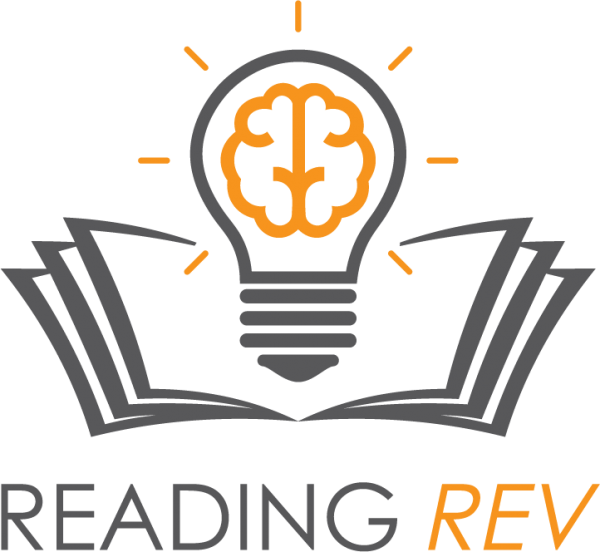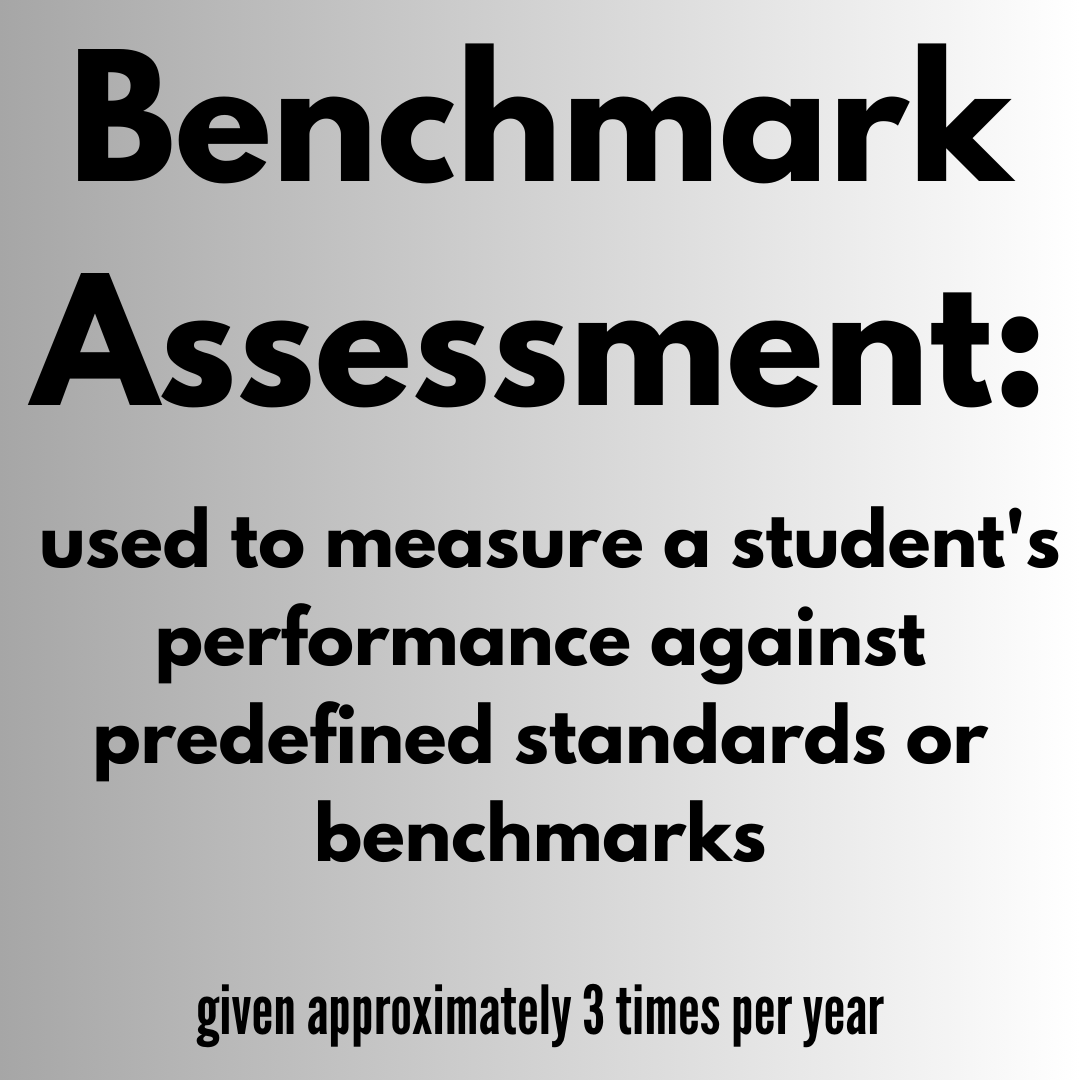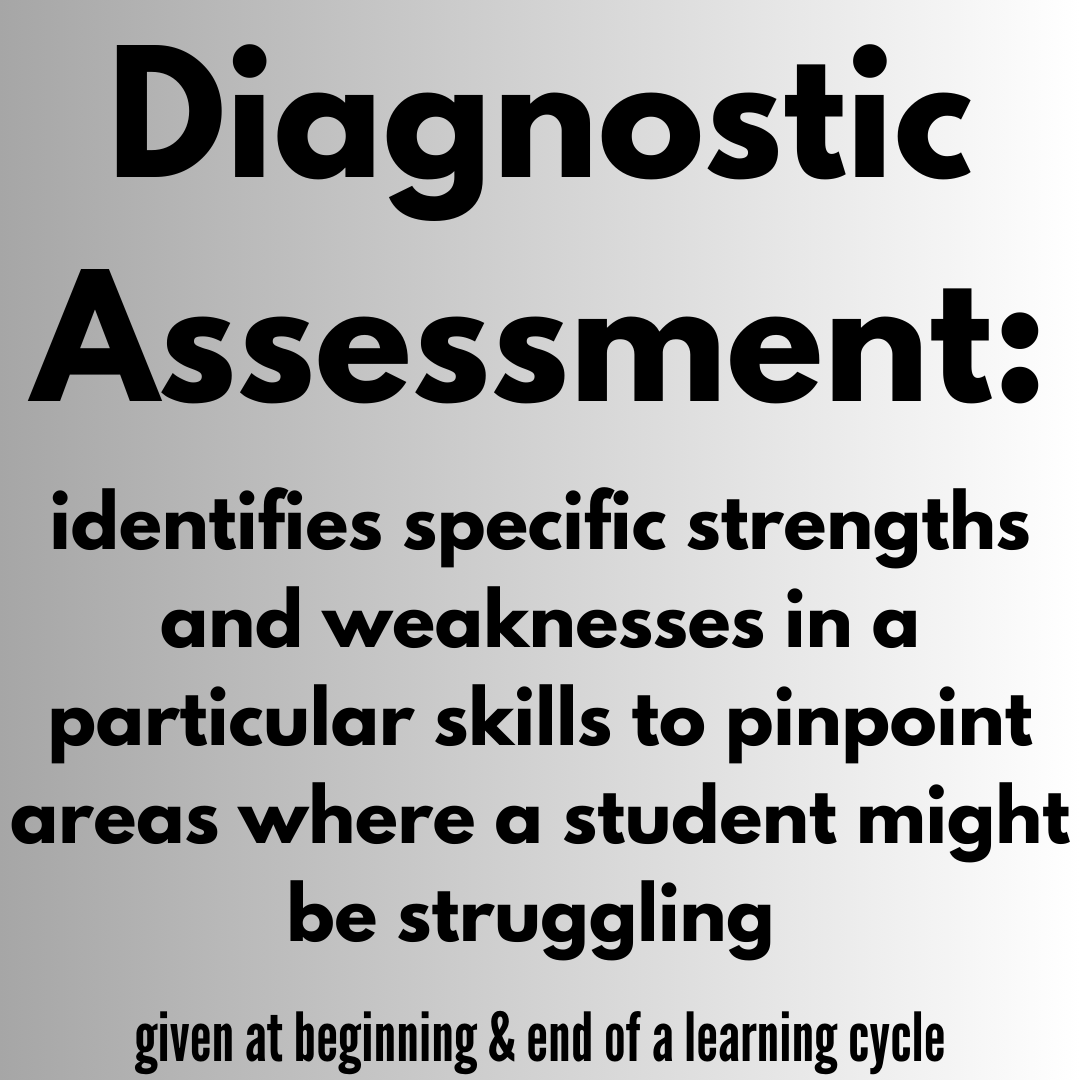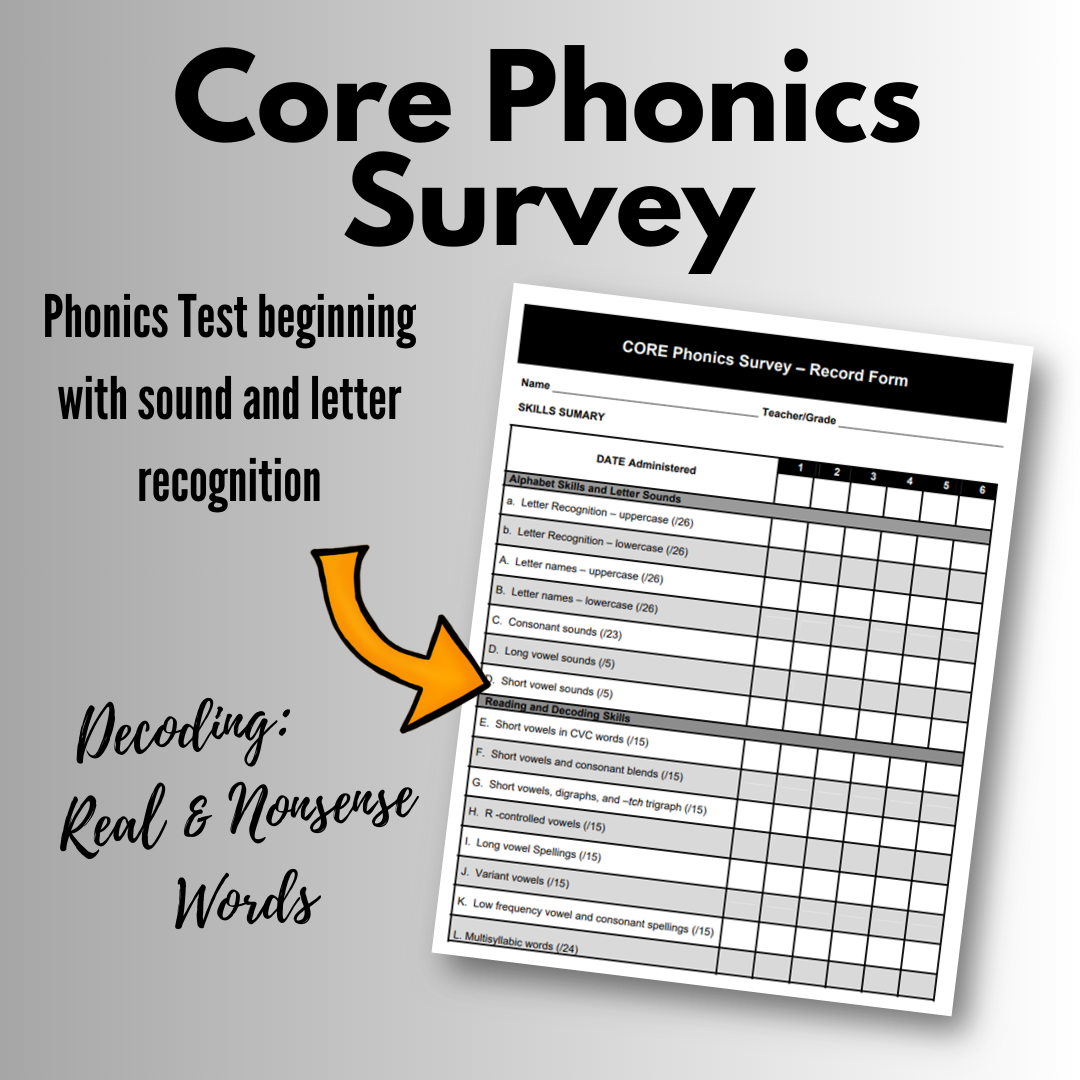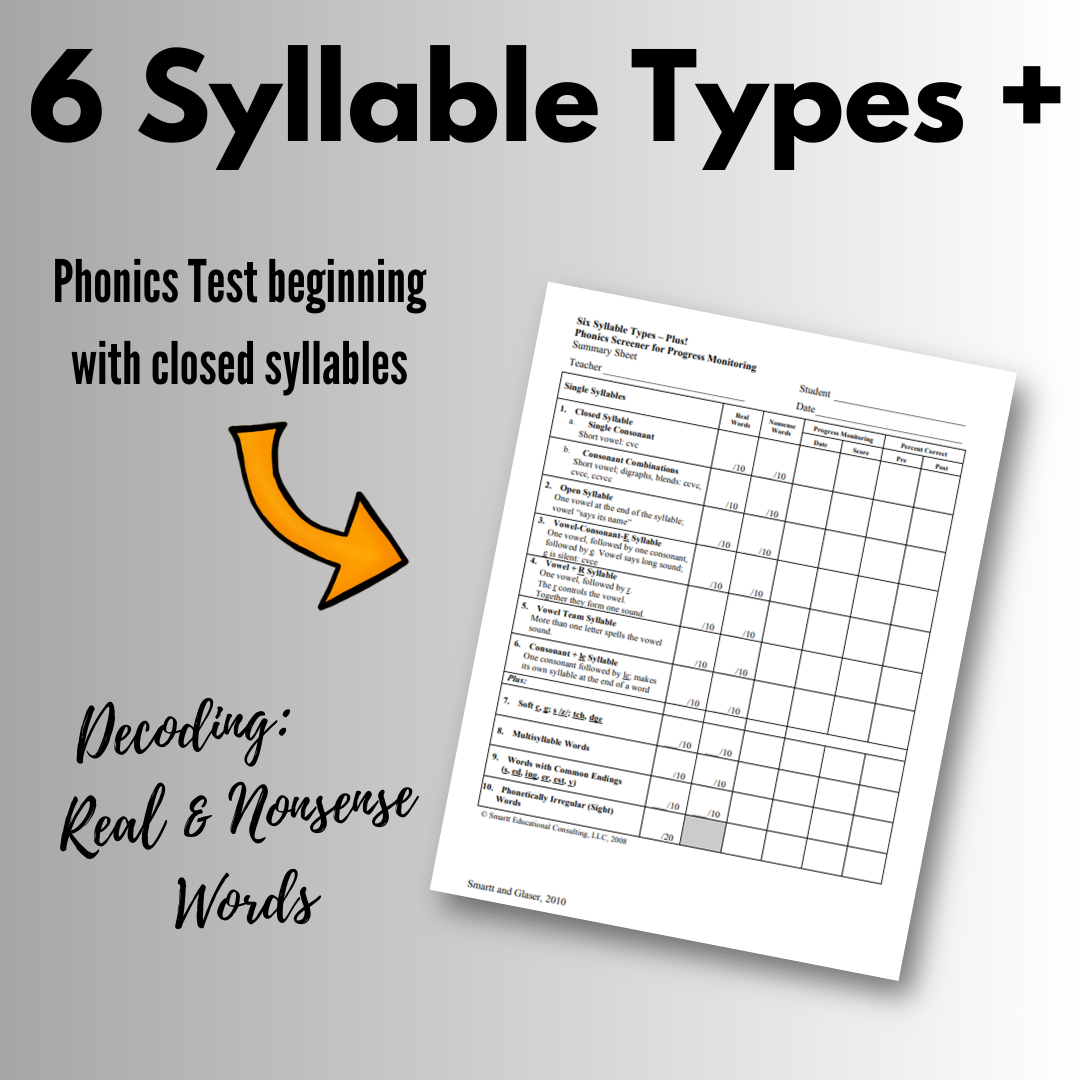Step 1: Diagnostic Assessments
Many children can get through kindergarten, first, and second-grade using visual memory, picture clues, and compensation skills. Their reading skills appear fairly intact. Then, around third grade, the text gets more challenging, the words get longer, and the pictures go away. Suddenly, it is obvious that these children are not really competent readers! It is often a time of confusion and frustration for parents and teachers who thought that everything was okay.
The bottom line is that without thorough diagnostic testing, it is difficult to determine if a young child really has the foundational skills needed for reading, mastered or not. This testing should be happening in Kindergarten! In fact, many states have passed laws that require that it is. Early detection of reading and learning disabilities (like dyslexia) is crucial.
Whether it happens in primary grades or not, diagnostic assessments should be given to every person struggling with literacy, regardless of age! Without them, we can’t determine the underlying problem. Time is precious when an intermediate child is struggling to read. We need to identify exactly what skills are missing and then quickly, and purposefully, intervene.
After reading about the assessments, pop into Reading Rev’s VIP site where you’ll find a bite-sized video lesson modeling how to analyze data and create a plan.
Benchmark assessments are periodic tests given throughout the year to check if students are on track to meet grade-level expectations. They help teachers identify trends in student performance and guide instruction. Think of these tests as a thermometer that indicates that there is a fever or something wrong.
Common Benchmark Assessments for 3rd Grade and Beyond:
MAP Growth (NWEA)
i-Ready Benchmark Assessments
DIBELS 8th Edition (Acadience Reading)
STAR Reading
FastBridge Diagnostic
If you need a Benchmark Assessment to determine if a child is reading at grade level, we recommend DIBELS 8th Edition.
After benchmark assessments have been administered, and students have been flagged as reading below benchmark, we need to dig deeper!!
We then use Diagnostic Tests to dig deeper into a student's specific strengths and weaknesses. They help teachers understand why a student may be struggling and what targeted support they need.
DIAGNOSTIC ASSESSMENTS SHOULD BE GIVEN TO EVERY PERSON STRUGGLING WITH LITERACY REGARDLESS OF AGE!
The first step is to determine if the reading problem is based in sound-word decoding or in language comprehension. If a decoding-word-level issue is suspected, use the following assessments to find the root cause of the issue.
The P.A.S.T.
We know that our series is called BIG Kids Need Phonics Too, but the truth is that we cannot ignore phonological awareness (P.A.) when looking at reading problems. Phonological Awareness is the ability to hear and manipulate the sounds of a language. Phonics is matching those sounds to symbols or letters. Phonics is tied so closely with phonological awareness that we have to look at both to determine the root cause of the reading struggles. You can find out more about P.A. and Phonics in the links above.
Research shows that 80% of children with a significant reading disability (SRD) have a phonological processing deficit. The PAST Test (Phonological Awareness Screening Test) is a comprehensive assessment that is individually administered to determine if a child is proficient in the core components of phonological awareness. The subskills assessed are sentence segmenting, on-set rime, syllables, and phoneme isolation and manipulation. There are two versions of this assessment. One is geared more for primary students and the other offers more advanced phonological awareness and phonemic awareness tasks.
We highly recommend David Kilpatrick’s book Equipped for Reading Success that dives deeply into the importance of phonological awareness. It includes the PAST assessment as well as resources to teach and practice P.A. with students. Recent research shows that the advanced skills are not needed for accurate, fluent decoding so we give the test only through Level J.
PHONICS IS TIED SO CLOSELY WITH PHONOLOGICAL AWARENESS THAT WE HAVE TO LOOK AT BOTH TO DETERMINE THE ROOT CAUSE OF WORD DECODING STRUGGLES.
Check out the Kilpatrick’s PAST (advanced) here. This test starts with syllables. Watch a demo of how it’s administered and scored here.
Check out the Primary PAST here. It tests skills at the very beginning like identifying words in a sentence and rhyme recognition. (If your student is not successful with syllables, go back to this!)
CORE Phonics Survey
The next diagnostic assessment is the CORE Phonics Survey. This test determines if a student is proficient in letter names, letter sounds, and decoding at the word level. Each section assesses one phonetic pattern (such as short vowels with digraphs). It concludes with multisyllabic words.
This test is great because it allows you to determine exactly where you need to begin your phonics instruction. It also offers both real and nonsense words. In intermediate grades, it is important to have students decode and spell nonsense words because they have memorized many common real words. For example, if a student reads the top row: tape, key, toe, paid, feet accurately, but struggles reading the bottom row: loe, hine, beap, faim, soat, you have insight that they are not phonetically secure with long vowels. This is where you begin your lessons.
The CORE Phonics Survey includes a place to document progress monitoring as well. After instruction, go back to the assessment to determine if the child is secure in that skill and ready to move on to the next one.
THIS TEST IS GREAT BECAUSE IT ALLOWS YOU TO DETERMINE EXACTLY WHERE YOU NEED TO BEGIN YOUR PHONICS INSTRUCTION.
Check out the CORE Phonics Survey here.
6 Syllable Types- Plus!
One of our favorite diagnostic tests for phonics is 6 Syllable Types- Plus! This test is similar to CORE Phonics as it gives real and nonsense words for each phonetic pattern. Included are real and nonsense words containing the six syllable types (closed, open, silent e, r-controlled, vowel team, consonant -le), plus these additional patterns: soft c and g, -dge/-tch, multisyllabic words, word endings, and phonetically irregular words.
We love that the scoring sheet breaks down the score for real versus nonsense words. It can be obvious at a glance if a child has memorized common words, but not mastered a phonetic pattern. Progress Monitoring can also be recorded.
Again, your students' results determine where you begin your phonics instruction.
WE LOVE THAT THE SCORING SHEET BREAKS DOWN THE SCORE FOR REAL VERSUS NONSENSE WORDS. IT CAN BE OBVIOUS AT A GLANCE IF. A CHILD HAS MEMORIZED COMMON WORDS, BUT NOT MASTERED A PATTERN.
Please note: this assessment was created by Susan M. Smartt and Deborah R. Glaser as part of their Next Steps in Literacy Instruction- Connecting Assessments to Effective Intervention 2nd Edition (2024).
This is a free assessment for those who own this (highly recommended) book. The assessment can be downloaded after purchase at https://downloads.brookespublishing.com/
*We do not find it necessary to administer both the CORE Phonics Survey and 6 Syllables Types Plus! We like CORE Phonics better for primary students because it includes letter and sound recognition. We recommend 6 Syllable Types Plus! for intermediate students because it has more multisyllabic words. Both are great and you can determine which is better for your students.
Developmental Word Knowledge Inventory
Both the Core Phonics Survey and 6 Syllable Types Plus! assess a student’s ability to decode or read words. The counter skill that also needs to be tested is a student’s ability to encode or spell.
We find that older kids who have used compensation strategies for years can become fairly proficient readers. However, these kids often have awful spelling! This is one of the greatest indicators that something is wrong. It may be that they have either a phonological processing deficit or that they need phonics instruction!
The Developmental Word Inventory is a basic spelling test. It can be given whole group or one-on-one. This test has 30 words that incorporate all the basic phonetic patterns. It breaks the words into the spelling stages of Early-phonetic, Phonetic, Transitional, and Fluent.
Again, the results of this assessment should drive your literacy instruction. You can find out more about research-based spelling instruction here.
STRUGGLING WITH SPELLING IS AN INDICATOR THAT A STUDENT HAS A PHONOLOGICAL OR PHONETIC DEFICIT.
Check out a basic Word Knowledge Inventory here and a more advanced version here.
Reading Rev also has a multisyllabic word inventory that follows the RR Program scope and sequence. It can be found here.
If you are working with students who can read and spell single syllable words, but battle multisyllabic words, Reading Rev’s Phonics, Spelling, & Morphology Program has a Multisyllabic Decoding and Encoding Assessment. These can be administered and analyzed to know exactly where to begin your instruction!
Morpheme Assessment
Morphology is the key to multisyllabic word decoding and vocabulary comprehension! To understand the basics, start here, but just like all other facets of literacy, we need to know what our students know and where to start instruction. This Morphology assessment will give you feedback on your students’ understanding of the kinds of morphemes: prefixes, roots/ bases, and suffixes. It will show if they can identify those morpheme in a word and if they can determine a word’s meaning based on its meaningful parts. This assessment follows the Reading Rev Spelling, Phonics, and Morphology Program Scope and Sequence.
Learning morphology will significantly help students decode multisyllabic words as well as increase their vocabulary!
This assessment tests 42 morphemes and can be found in the Reading Rev Intermediate Morphology Program as well as here.
If your students are ready for more advanced morphology, you can use the Reading Rev Advanced Morphology Assessment included in the Advanced Word Study Program to teach missing skills.
Putting it All Together!
Once you have administered these assessments, it is important for you to spend time analyzing the results. What are your student’s strengths? Where are they solid? What gaps do they have? Where are they proficient, but not automatic? Where do they completely fall down?
It takes time, but this is where the magic can happen. You will be amazed at the growth and progress your students can make when you personalize their instruction! Create skill-based reading groups that provide instruction and practice on missing phonetic concepts. Fill a gap and move on to the next concept.
THIS IS THE MISSING PUZZLE PIECE. JUST TELLING OLDER STUDENTS TO “READ MORE” WILL NOT HELP. BIG KIDS NEED, AND DESERVE, TO LEARN THE FOUNDATIONAL SKILLS OF READING.
Check out our FREE Diagnostic Assessment Analysis form here.
You can watch this analysis modeled in the Reading Rev VIP site!
